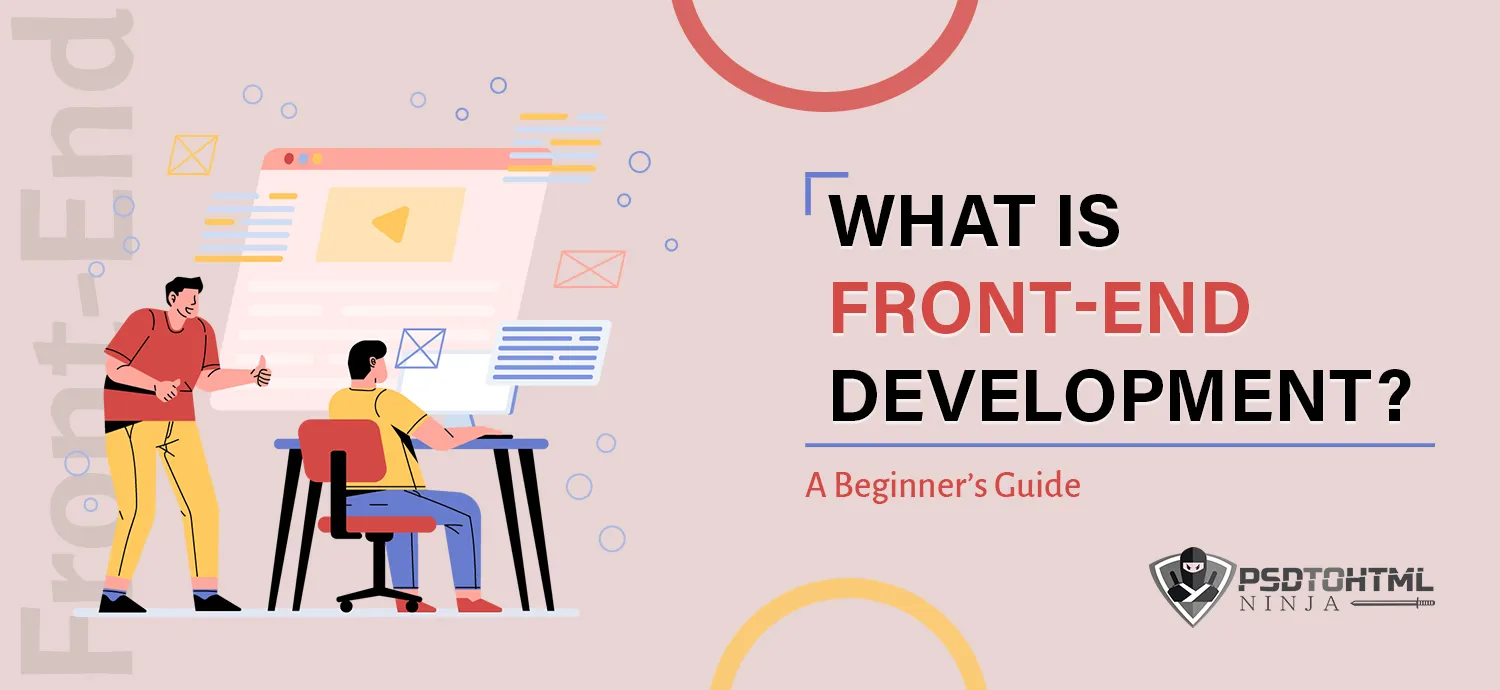What Is Front-End Development? A Beginner’s Guide

Table of Content
Web development is a field that has expanded dramatically in recent years. It is primarily divided into two categories: front-end and back-end.
Front-end developers are responsible for what users see in their browsers and interact with. They use programming languages such as HTML, CSS, JavaScript, Bootstrap, and jQuery (among other languages).
On the other hand, back-end developers are primarily concerned with the website’s structure and how users’ actions will impact what they see in their browsers. They use programming languages like Ruby, Python, PHP, .NET, and Java to build out the server-side components of an application.
Today, we will discuss the customer-facing side of the website development, i.e., front-end. So, without further ado, let’s get started!
What is Front-End?
A website’s front end is the part a user sees, interacts with, and uses to navigate their way around a website. The front end is where users interact with your content.
It is worth mentioning that the more visually aesthetic your website’s front-end is, the more the customers will like it. They’ll also stay for longer and are more likely to make a purchase.
What is Front-End Development?
Front-end development is the process of making a website look, behave and feel the way you want it to. Front-end development is a combination of programming, design, user experience, and user interface (UI).
Front-end development starts after the design phase, so the site can be tested before it’s launched. This means that both designers and developers must work closely together during this time.
What Does A Front-End Developer Do?
A front-end developer’s role is to design, implement and maintain user interfaces (UI) that allow visitors to access a site’s content.
Front-end developers use HTML, CSS, JavaScript, jQuery, and other coding languages to develop user-facing components such as forms and buttons.
HTML (Hyper Text Markup Language)
It is used to create the structure of a web page. It represents the basic building blocks of all websites by defining headings, paragraphs, lists, and so on.
CSS (Cascading Style Sheets)
It is used to style the look of a web page. CSS gives you control over font size, colors, and more so that you can change how your site looks at every level. You can even control how each paragraph looks with different fonts or colors!
However, when you hire front-end developers for your website, follow these tips.
- Evaluate their portfolio. Look for examples in their work.
- Analyze their skills and resume.
- Request work samples, including similar projects they’ve worked on.
- Check if they have experience working in the languages and frameworks you need.
What Makes a Good Front-End?
As mentioned above, a good front-end is the one that makes it easier for customers to navigate through the website and find what they’re looking for. That said, let’s look at some of the key features that make a front-end good.
#1- White Space
White space, also known as negative space, is the area between elements on a page. It’s important for web design because it makes the page look clean and organized.
White space can be considered empty website areas that aren’t filled with text or other elements like images or videos. Without white space, every part of a webpage would be squeezed together, making it difficult for users to focus on what they’re supposed to do on your site.
#2- Color Palette
Color is a powerful way to convey information. It can be used to convey emotion, meaning, and hierarchy. For example, red is often associated with love or passion; blue is used in branding for corporate websites; green suggests nature or eco-friendliness.
You can also use colors to distinguish between different types of content on a page (e.g., separate primary navigation items from secondary ones).
In front-end web development, color plays a critical role in user experience because it helps them form an opinion even before they start interacting with any other part of your website.
#3- Font
Fonts make it easier to read the content on your website. However, make sure that:
- They are easy to read.
- Fonts should be consistent with the theme of the website.
- They should be appropriate for the audience (e.g., young children vs. adults).
- Fonts that are hard to read on mobile devices are terrible because they can be challenging to use with touchscreens or keyboards, which makes them more frustrating than helpful!
#4- Navigation
Navigation is the bread and butter of a website. It’s an important part of the user experience, so it should be easy to find and use. Navigation should also be consistent with your brand and the content on each page.
Importance Of a Good Front-End Development Company
It’s important to understand your audience and their needs. It will help build a front-end that your customers love and want to interact with.
To create great user experiences, you must choose a front-end development company that knows your audience and how to meet their needs.
However, ensure that you choose a company with experience in front-end development services like PSD to HTML Ninja. We can do the audience research on behalf of you. Since we know the best practices of front-end web development, we help ensure your customers love your website irrespective of the device they use.
Additionally, we can keep all your web pages intact, making navigation seamless and effortless.
Let’s discuss your requirements and understand how we can help you!